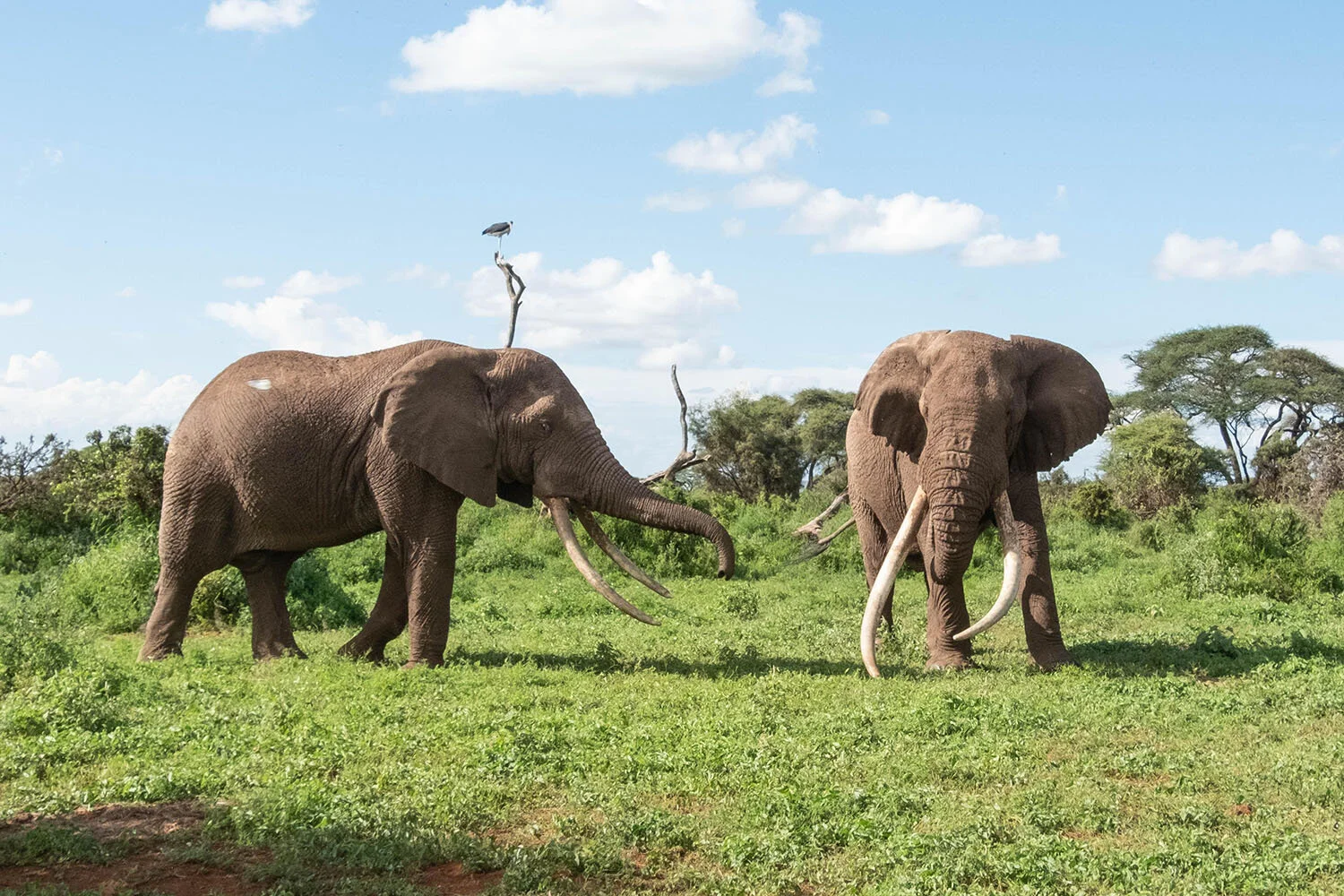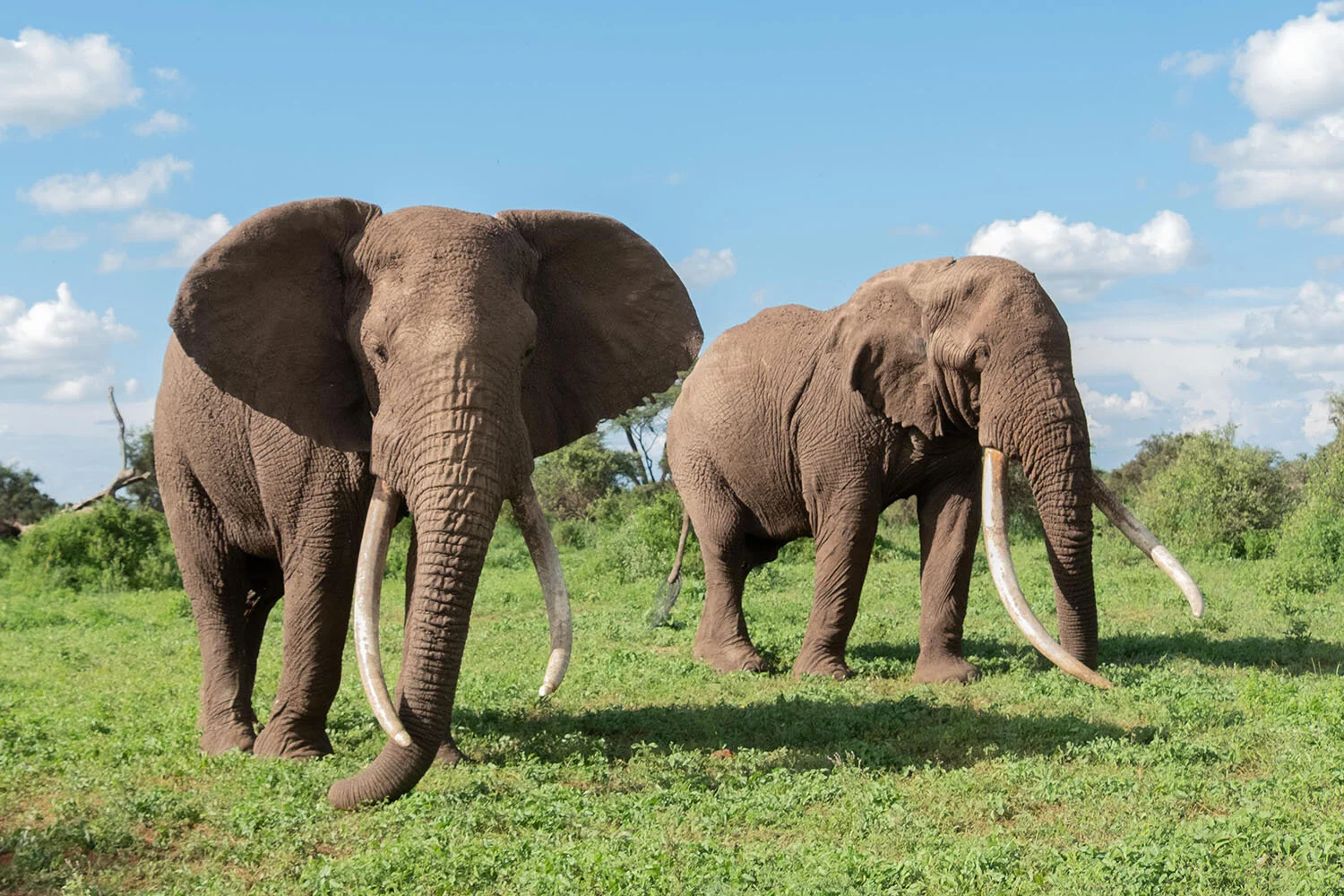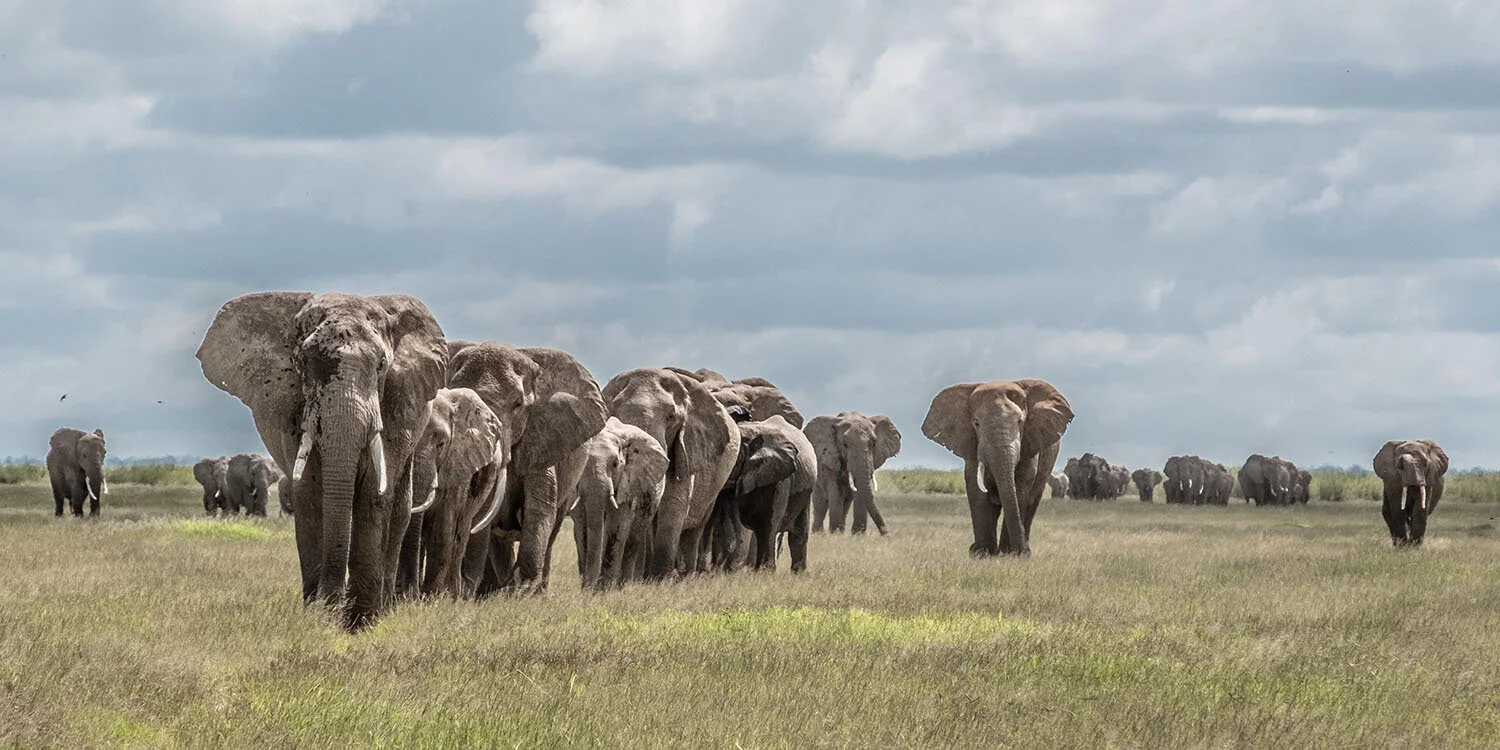RIP Tim
And when great souls die,
after a period peace blooms,
slowly and always
irregularly. Spaces fill
with a kind of
soothing electric vibration.
Our senses, restored, never
to be the same, whisper to us.
They existed. They existed.
We can be. Be and be
better. For they existed.
― Maya Angelou
Feb. 4, 2020: Big Tusker Tim is dead. I looked at my email in disbelief. Impossible. I felt the gap between comprehension and acceptance in my gut. I saw him alive and well just 3 weeks earlier. Twenty Big Tuskers left on the planet—now there are 19.
I went to Amboseli to see the elephants with the hope I might meet Tim, ambassador against poaching and Kenya’s National Treasure. I was amazed when my guide Pilipili turned to me on arrival and said, “I understand you’re a keen photographer. Would you like to meet Tim?” Never in my wildest dreams did I think it would be that easy. I’d read stories of photographers employing scouts across the region to report sightings, racing across the plains to capture an image of Tim before the day’s light faded. Yet there I was driving down a dirt track to meet him 10 minutes after landing.
There’s no question there was something special about Tim. He was known as mischievous and intelligent. At age 50 he’d earned the respect of elephants and humans alike. Even though he was massive, 6 tons with tusks that weighed more that 100 pounds each, I felt safe and awed in his presence.
Elephants and humans have much in common. They show love, compassion, and grief. When an elephant dies the family gathers around touching the body, vocalizing with trumpets and rumbles. They hold a vigil then eventually travel on leaving the body to the scavengers. Predators like lions and hyenas move in for a feast. Vultures and carrion eaters are next in line, picking the bones clean. Finally, insects and the Sub-Saharan sun finish the task, ensuring disease does not follow. Only the bones remain as a memorial to the deceased. Elephants have extraordinary memories. They pause and caress the bones when they pass by. I imagine they share stories of their ancestor when they congregate.
Tim’s buddy reaches out in greeting
Tim’s body was taken to Nairobi to be preserved for display at the National Museum. It will be impressive, like the dinosaur exhibits in Natural History Museums. On the anniversary of Tim’s death, I find myself wondering about his elephant community. There are no bones for his family to visit, no gravesite to gather at and remember. Fortunately, Tim died of natural causes, but I wonder, did people inflict an additional loss on the elephants by taking his body?
The night Tim died his friends trumpeted in distress. They tried again and again to raise him up. He died of a twisted gut — there was no hope of recovery. How have the elephants dealt with their grief and loss? When someone dies in the human family the body is proof of the end of life. We hold rituals of closure to honour the dead and to comfort the bereaved. The elephants do not have Tim’s remains to grieve their loss and remember him.
Museums are being called on to repatriate stolen sacred artifacts and bones taken from Indigenous lands. Should this be considered with Tim? Would the elephants recognize his bones? A reproduction of Tim could be made to honour him and educate people about wildlife and conservation. His actual body does not need to be preserved for this message. If his body had been left as nature designed, it would have fed many species. The elephants would have a monument to their King, a place to gather, mourn and comfort each other. Regretfully, because of human greed, his tusks would still need to be protected in the museum.
When I first heard of Tim’s death, I was relieved to learn he would be preserved. On the anniversary of his death, I have a different perspective. I wonder if leaving his body with his community would have been better for both the animals and the local people who knew him so well. I am humbled and reminded that Elephants have much to teach us. Sometimes, when we think we are making a respectful decision there are unintended consequences.
Thank you for reading. Support conservation efforts by purchasing a print of Big Tusker Tim. Every purchase of a wildlife-inspired piece in my full store helps charitable organizations doing valuable conservation work across the planet.








